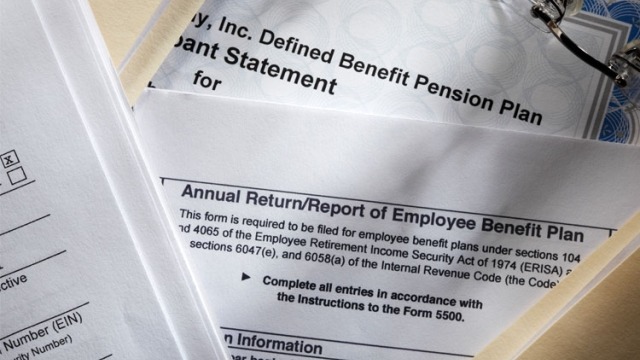Employment Tax Considerations for Restricted Stock Units That Vest on Retirement
2016-Issue 8 – A common provision in many restricted stock unit (RSU) awards is that vesting will accelerate when a participant becomes eligible to retire, after having reached a certain age and/or completed a minimum number of years of service. One aspect of “retirement vesting” that can be overlooked is the timing of the employment tax obligations.
In the normal case, if an RSU has a service-based vesting period, the shares will be transferred following the end of the vesting period under the applicable award agreement. There is no income or employment tax event until the shares are actually or constructively received. However, if the RSU award agreement provides for retirement vesting, the lapse of the service-based substantial risk of forfeiture will occur when the participant becomes retirement eligible, even though the shares may not be deliverable until the original settlement date. Therefore, under the standard timing rules, FICA and Medicare tax will become due and payable immediately. This obligation to pay employment taxes before delivery of the vested shares can be unwelcome news for both the employer and the participant.
To help bridge the gap, this edition of Tax Advisor Weekly discusses the following three alternatives to the standard timing rule and methods for calculation and satisfaction of FICA and Medicare tax obligations: 1) the rule of administrative convenience, 2) the lag method and 3) net settlement. We provide example calculations for each to illustrate how they work in practice and use the following assumptions in all of the examples:
- A participant who becomes eligible to retire on September 30, 2016, was granted an award of 200 time-vested RSUs on February 15, 2016, vesting in one-half increments on February 15, 2017, and February 15, 2018.
- The participant is subject to a federal income tax rate of 30 percent and has reached the social security maximum by September 30, 2016, and the 0.9 percent Medicare tax for wealthy individuals applies.
- The fair market value of an underlying share is assumed to be $83 on September 30, 2016, and $82 on December 31, 2016.
Rule of Administrative Convenience
Treasury Regulation Section 31.3121(v)(2)-1(e)(5), which governs FICA taxation of deferred compensation, provides a “rule of administrative convenience” under which the employer could elect to treat the employment tax obligation as occurring later in the tax year, i.e., on December 31. However, if this convenience rule is invoked, the fair market value of the underlying shares used for calculating the tax must be determined on the actual date upon which employment taxes are withheld.
Example 1 (Rule of Administrative Convenience)
Under our assumptions, the substantial risk of forfeiture lapses on the entire award (200 RSUs) on September 30, 2016, because the participant has become eligible for retirement as defined in the award.
- The employer could choose to either withhold the employment tax obligation as of September 30, 2016 (at $83 per share) or invoke the rule of administrative convenience and withhold the employment tax obligation from other outstanding cash compensation (or ask for payment from the participant by check) at a later date in 2016, such as December 31, 2016 (at $82 per share).
- Assuming a Medicare withholding tax rate of 2.35 percent, this would equate to a Medicare withholding amount of $390.10 (200 x $83 x 2.35 percent) under standard timing and $385.40 (200 x $82 x 2.35 percent) using the rule of administrative convenience.
- The same 200 RSUs will be includible in the participant’s taxable income when settlement of the RSU award is ultimately made following each of February 15, 2017, and February 15, 2018.
Lag Method
Treasury Regulation Section 3121(v)(2)-1(f)(3) provides another alternative, commonly referred to as the “lag method.” The lag method can be used alone or in conjunction with the rule of administrative convenience. If used alone, the lag method permits the delay and payment of FICA and Medicare taxes for up to three months after the employment taxes are payable. If the lag method is used in conjunction with the rule of administrative convenience, payment of employment taxes could be delayed for an additional three months. Similar to the rule of administrative convenience, the fair market value of the underlying shares must be calculated by reference to the date on which the employment tax obligation is determined. The lag method would increase the participant’s tax obligation because interest must be calculated at a rate not less than the mid-term applicable federal rate for January 1 of the calendar year, compounded annually (applicable federal rate — AFR), for the period between when the employment tax is determined and the date of collection.
Example 2 (Rule of Administrative Convenience with Lag Method
Assuming the same facts, and also that interest is assumed to be credited at 0.55 percent for the period between December 31, 2016, and March 31, 2017:
- The employer could choose to invoke the rule of administrative convenience and price the employment tax obligation on December 31, 2016 (at $82 per share) and apply the lag method and wait to withhold the requisite amount from another amount payable to the participant in March 2017.
- Assuming a Medicare withholding tax rate of 2.35 percent, this would equate to a Medicare withholding amount of $390.10 under standard timing, $385.40 using the rule of administrative convenience, and $387.52 using the rule of administrative convenience with the lag method.
Net Settlement of Employment Tax Obligation
It is also possible to provide for “net settlement” of employment taxes in the award agreement by stating that shares will be held back in satisfaction of the participant’s share of FICA and Medicare withholding on the vesting of an RSU award. There are additional income tax consequences to be considered in the net settlement context because although the subject RSU awards are not generally includible in a participant’s taxable income until payment in respect of the RSUs is actually or constructively received, if shares are withheld to satisfy employment tax obligations, the value of the withheld shares themselves would constitute taxable income to the participant. Therefore, the number of shares withheld has to be greater than solely the amount of the employment tax obligation.
Example 3 (Net Settlement)
Again assuming the same facts:
- The value of the 200 RSUs on September 20, 2106, would be $16,600.
- The amount of the Medicare withholding obligation at an assumed rate of 2.35 percent would be $390.10 (200 x $83 x 2.35 percent).
- The combined amount of the Medicare withholding and the taxable income on shares withheld to satisfy it would be $557.26 (This is the sum of $390.10 in Medicare withholding plus income tax, assuming an income tax rate of 30 percent, $390.10 / [1-.30]).
- If the award agreement does not allow for fractional shares, the $557.26 would be net settled by holding back 6 shares from the ultimate RSU settlement and also by withholding $59.26 from some other of the participant’s cash compensation.
- 194 shares would remain available for delivery to the participant when settlement of the RSU Award is ultimately made following each of February 15, 2017, and February 15, 2018.
A final consideration regarding net settlement is Internal Revenue Code Section 409A compliance. While Section 409A generally prohibits an acceleration of the time or form of payment of nonqualified deferred compensation, Treasury Regulation section 1.409A-3(j)(4) states that a plan may provide for the acceleration of the time or schedule of a payment, or a payment may be made under the plan, to pay income and employment taxes (Treas. Reg. 1.409A-3(j)(4)(i), (vi) and (vii)). However, it is important to note that for this relief from 409A’s anti-acceleration rules to be available, the decision about whether to hold back RSU shares to satisfy the employment tax obligations must be solely in control of the employer and not within the control of the participant. The employer should document its policy for applying a consistent methodology for satisfying employment tax obligations on RSU awards for which the substantial risk of forfeiture lapses upon retirement.
Alvarez & Marsal Taxand Says:
The rule of administrative convenience, the lag method and net settlement are three alternatives that can be used to mitigate unpleasant employment tax consequences for participants and employers alike. Your Alvarez & Marsal Executive Compensation & Benefits professionals are ready to talk about each of these aspects of retirement vesting, including the elements of and drafting of a net settlement policy. Please let us know how we can help.
For More Information
Managing Director, Dallas
+1 214 438 1013
J.D. Ivy
Managing Director, Dallas
+1 214 438 1028
James Deets
Senior Director, Dallas
+1 214 438 1017
Allison Hoeinghaus
Senior Director, Dallas
+1 214 438 1037
Rob Casburn
Senior Director, Dallas
+1 214 438 8470
Disclaimer
The information contained herein is of a general nature and based on authorities that are subject to change. Readers are reminded that they should not consider this publication to be a recommendation to undertake any tax position, nor consider the information contained herein to be complete. Before any item or treatment is reported or excluded from reporting on tax returns, financial statements or any other document, for any reason, readers should thoroughly evaluate their specific facts and circumstances, and obtain the advice and assistance of qualified tax advisers. The information reported in this publication may not continue to apply to a reader's situation as a result of changing laws and associated authoritative literature, and readers are reminded to consult with their tax or other professional advisers before determining if any information contained herein remains applicable to their facts and circumstances.
About Alvarez & Marsal Taxand
Alvarez & Marsal Taxand, an affiliate of Alvarez & Marsal (A&M), a leading global professional services firm, is an independent tax group made up of experienced tax professionals dedicated to providing customized tax advice to clients and investors across a broad range of industries. Its professionals extend A&M's commitment to offering clients a choice in advisers who are free from audit-based conflicts of interest and bring an unyielding commitment to delivering responsive client service. A&M Taxand has offices in major metropolitan markets throughout the United States and serves the United Kingdom from its base in London.
Alvarez & Marsal Taxand is a founder of Taxand, the world's largest independent tax organization, which provides high quality, integrated tax advice worldwide. Taxand professionals, including almost 400 partners and more than 2,000 advisers in nearly 50 countries, grasp both the fine points of tax and the broader strategic implications, helping you mitigate risk, manage your tax burden and drive the performance of your business.
To learn more, visit www.alvarezandmarsal.com or www.taxand.com





